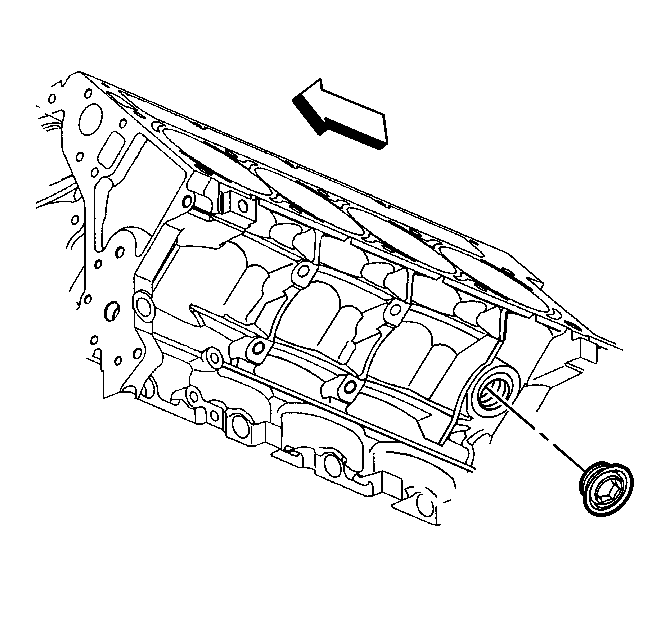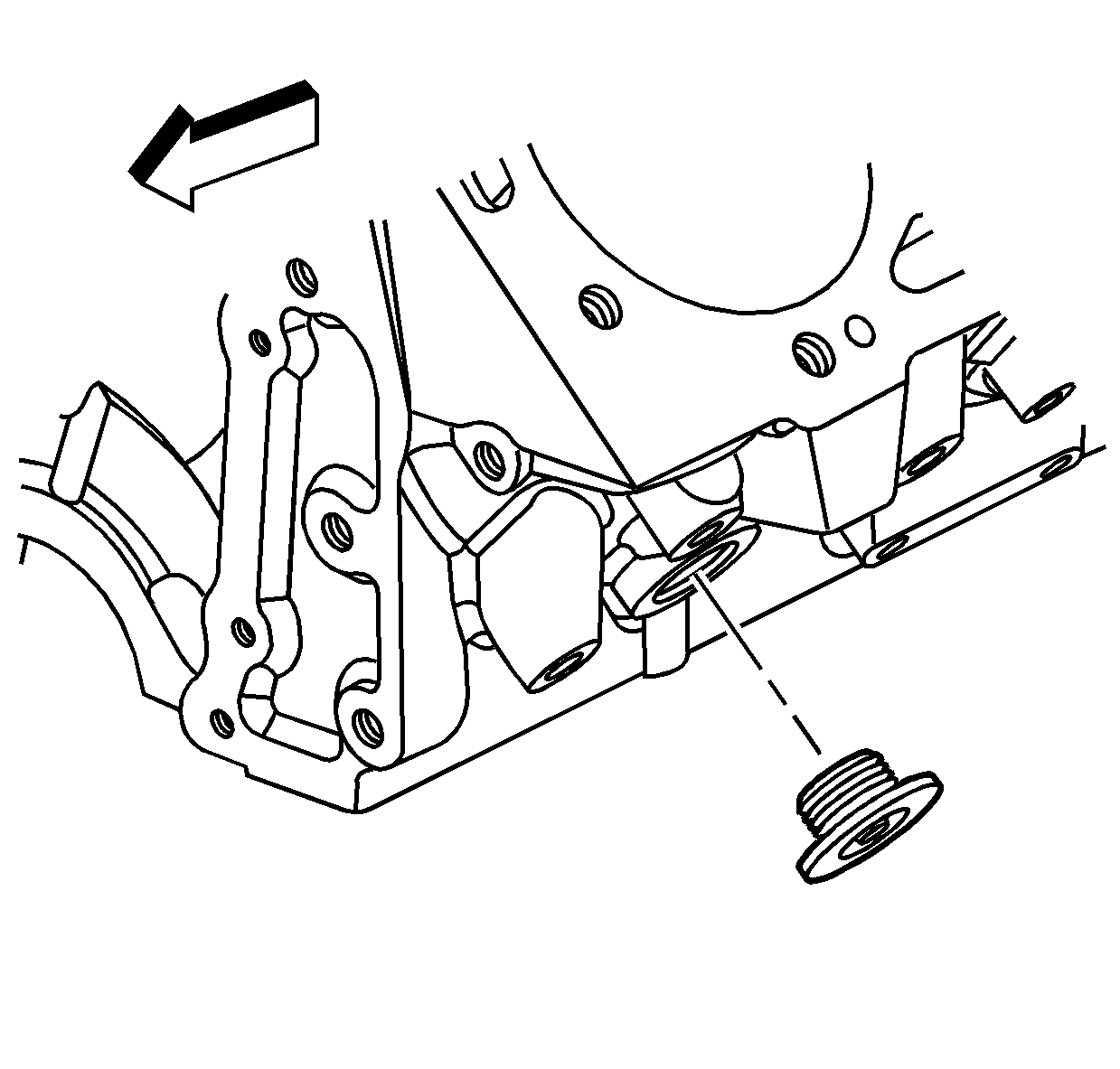Drain and Fill Procedure
Caution: With a pressurized cooling system, the coolant temperature in the radiator
can be considerably higher than the boiling point of the solution at atmospheric
pressure. Removal of the surge tank cap, while the cooling system is hot and
under high pressure, causes the solution to boil instantaneously with explosive
force. This will cause the solution to spew out over the engine, the fenders,
and the person removing the cap. Serious bodily injury may result.
Notice: The procedure below must be followed. Improper coolant level could result in
a low or high coolant level condition, causing engine damage.
- Park the vehicle on a level surface.
- Follow the steps below in order to remove the surge tank fill cap:
| 2.1. | Slowly rotate the cap counterclockwise. |
| 2.2. | Stop rotating and allow the hissing to stop. |
| 2.3. | After all hissing stops, continue turning counterclockwise in order to
remove the cap. |
- Open the radiator drain cock.
- Allow the system to drain completely.
- Inspect the engine coolant for the following:
| • | Discolored - follow the flush procedure below. |
| • | Normal in appearance - continue with the next step. |
| | Notice: When adding coolant, use DEX-COOL® coolant. If silicated coolant
is added to the system, premature engine, heater core or radiator corrosion
may result. In addition, the engine coolant will require change sooner-at
50 000 km (30,000 mi) or 24 months.
|
Notice: DO NOT use cooling system seal tabs, or similar compounds, unless otherwise
instructed. The use of cooling system seal tabs, or similar compounds, may
restrict coolant flow through the passages of the cooling system or the engine
components. Restricted coolant flow may cause engine overheating and/or damage
to the cooling system or the engine components/assembly.
- Close the radiator drain cock.
- Fill the system through the surge tank opening.
- Pre-mix a 50 to 60 percent solution of DEX-COOL® and clean, drinkable
water.
- Slowly add the pre-mixed solution to the surge tank until the level is
slightly above the COLD FILL mark.
- Start the engine.
- Idle the engine for 1 minute.
- Loosely install the surge tank cap. DO NOT allow the system to build up
pressure.
- Cycle the engine from idle to 3,000 RPM in 30 second intervals until the
engine coolant reaches 99°C (210°F) and the thermostat opens.
- Shut off the engine.
- Refer to step 2 in order to remove the surge tank cap.
- Start the engine.
- Idle the engine for 1 minute. Fill the surge tank to 12.7 mm (1/2 in)
above the COLD FILL mark on the surge tank.
- Install the radiator surge tank cap.
- Cycle the engine from idle to 3,000 RPM in 30 second intervals until the
engine coolant reaches 99°C (210°F) and the thermostat opens.
- Shut off the engine.
- Top off the coolant, as necessary, to 12.7 mm (1/2 in)
above the COLD FILL mark on the surge tank.
- Rinse away any excess coolant from the engine and the engine compartment.
- Inspect the concentration of the coolant.
Engine Block Draining

- Drain the cooling system, refer to the above
procedure.
- If equipped with the 4.8L, 5.3L or 6.0L engine, remove the left and right
engine block coolant drain plugs.

- If equipped with the 8.1L engine, remove
the left and right engine block coolant drain plugs.
- Remove the engine block coolant heater, if equipped. Refer to
Coolant Heater Replacement
.
- Allow the engine block to drain completely.
- Apply sealant GM P/N 12346004 (Canadian P/N 10953480)
or equivalent to the drain plugs.
Notice: Use the correct fastener in the correct location. Replacement fasteners
must be the correct part number for that application. Fasteners requiring
replacement or fasteners requiring the use of thread locking compound or sealant
are identified in the service procedure. Do not use paints, lubricants, or
corrosion inhibitors on fasteners or fastener joint surfaces unless specified.
These coatings affect fastener torque and joint clamping force and may damage
the fastener. Use the correct tightening sequence and specifications when
installing fasteners in order to avoid damage to parts and systems.
- Re-install the engine block coolant drain plugs.
Tighten
| • | Tighten the 4.8L, 5.3L or 6.0L engine block coolant drain plug to 60 N·m
(44 lb ft). |
| • | Tighten the 8.1L engine block coolant drain plug to 60 N·m
(44 lb ft). |
- Install the engine block coolant heater, if equipped. Refer to
Coolant Heater Replacement
.
- Fill the cooling system, refer to the above procedure.


